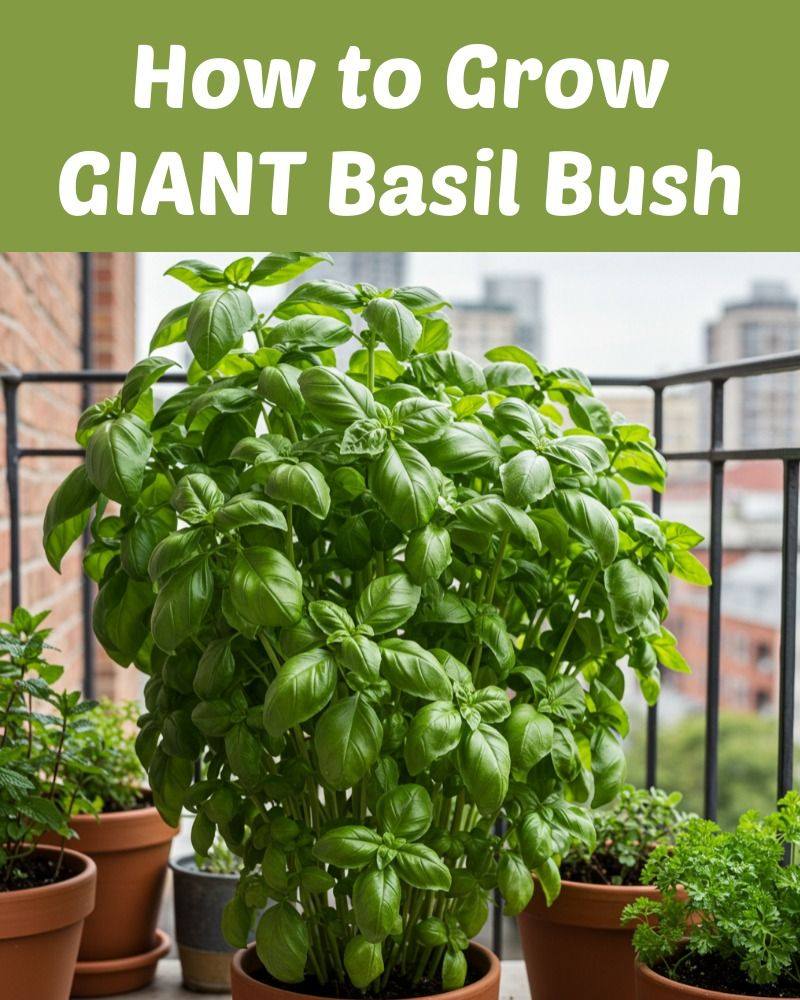ADVERTISEMENT
### **Preparing Your Soil and Planting Your Basil**
To grow a giant basil bush, your soil needs to be well-prepared, rich in nutrients, and well-draining. Basil thrives in loamy soil with a pH level of 6.0 to 7.0. Follow these steps to create the ideal growing conditions:
1. **Choose the Right Location**:
– Basil needs **full sunlight** to grow to its full potential, so choose a spot that receives at least 6 to 8 hours of sunlight each day.
– If growing basil indoors, place it near a south-facing window or under grow lights.
2. **Prepare the Soil**:
– Basil prefers **well-draining soil** rich in organic matter. If your soil is heavy or clayey, amend it with compost or well-rotted manure to improve drainage and nutrient content.
– Ensure the soil is slightly acidic to neutral (pH 6.0 to 7.0). You can test the soil pH using a simple soil testing kit.
3. **Planting Basil Seeds or Seedlings**:
– **Seeds**: If starting basil from seed, sow the seeds indoors 6-8 weeks before the last frost date. Plant the seeds about 1/4 inch deep in seed-starting mix and keep them moist but not soggy. Once the seedlings are strong enough and the danger of frost has passed, transplant them into the garden or larger containers.
– **Seedlings**: You can also buy basil seedlings from your local nursery. If planting seedlings, space them about 12-18 inches apart to allow enough room for growth.
### **Watering and Fertilizing for Giant Growth**
Once your basil is planted, proper watering and fertilization are crucial for growing a large, healthy basil bush.
1. **Watering**:
– Basil needs consistent watering, especially in hot weather. However, it is essential not to overwater, as basil does not like to sit in waterlogged soil. Ensure that the soil is moist but well-drained.
– Water deeply but infrequently to encourage deep root growth. Water at the base of the plant to avoid wetting the leaves, which can lead to fungal diseases.
2. **Fertilization**:
– Basil is a fast-growing herb that benefits from regular feeding. Use a **balanced, slow-release fertilizer** or an organic option like compost or aged manure.
– If growing basil in containers, it’s especially important to feed the plant, as container soil can become depleted of nutrients more quickly. A liquid fertilizer high in nitrogen can encourage lush, green growth.
– Avoid over-fertilizing, as too much nitrogen can lead to more leaves but fewer flowers and less flavor.
### **Pruning and Shaping Your Basil for Maximum Growth**
To achieve a giant basil bush, you must regularly prune and shape the plant. Pruning helps promote bushier growth by encouraging side shoots and prevents the plant from becoming leggy and spindly. Here’s how to do it:
1. **Pinching Off the Tips**:
– As soon as your basil plant has several sets of leaves, start pinching off the top tips. Use your fingers or clean scissors to remove the growing tip of the plant. This will stimulate the plant to grow more side branches, leading to a bushier and larger plant.
2. **Removing Flowers**:
– Basil produces small, white flowers once it matures, but flowering signals the plant to stop producing new leaves and start focusing on seed production. To keep your basil bush growing, regularly remove any flower buds that appear. Pinching off flowers also ensures your basil stays flavorful, as the leaves can become bitter once the plant starts to flower.
For Complete Cooking STEPS Please Head On Over To Next Page Or Open button (>) and don’t forget to SHARE with your Facebook friends
